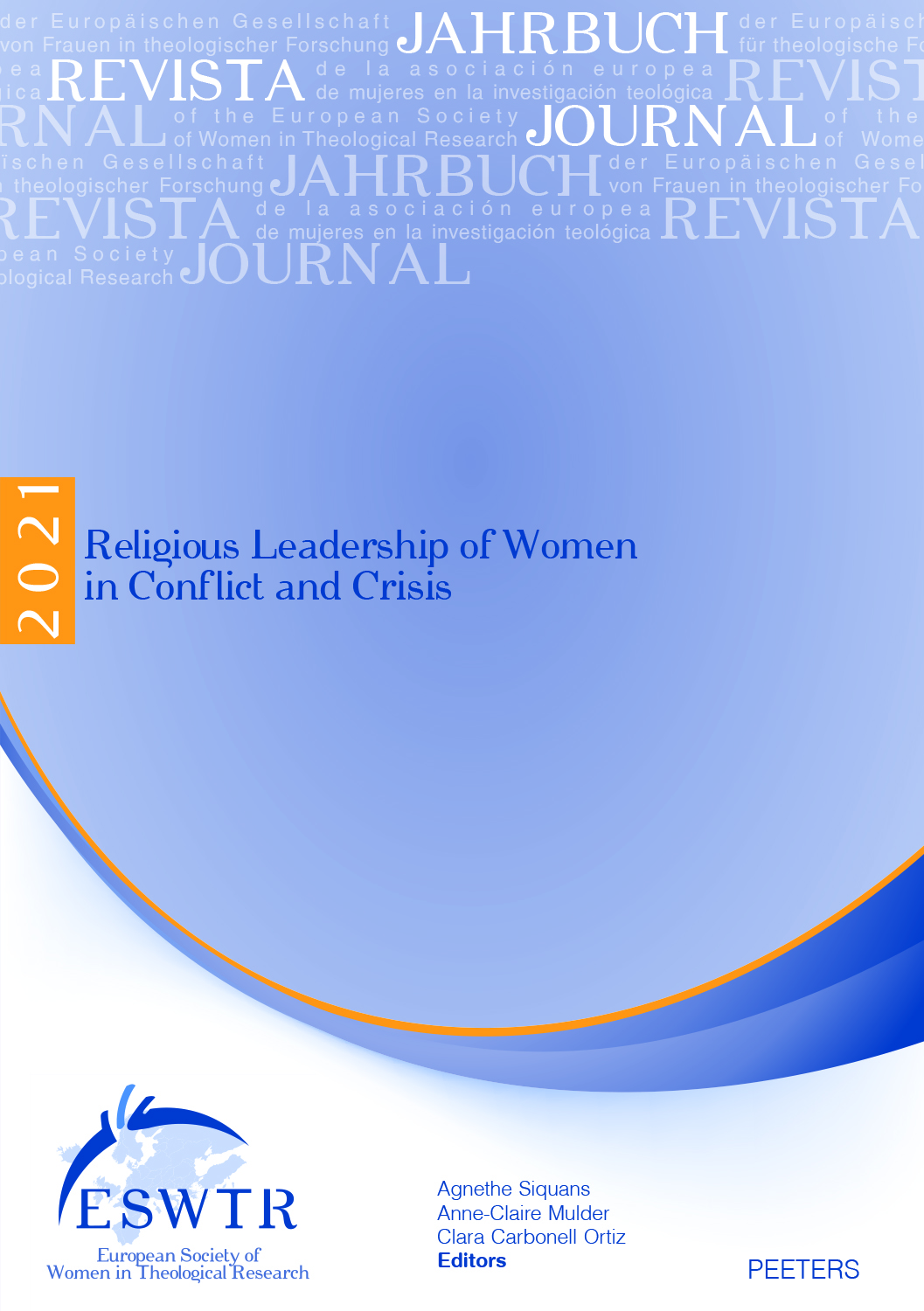 previous article in this issue previous article in this issue | next article in this issue  |

Preview first page |
Document Details : Title: Miriam, May Your Hope Give Us Hope! (Exod 2:1-10) Author(s): CALDUCH-BENAGES, Nuria Journal: Journal of the European Society of Women in Theological Research Volume: 24 Date: 2016 Pages: 31-45 DOI: 10.2143/ESWTR.24.0.3170024 Abstract : With the object of illustrating the theme of hope in the Bible through an example, this paper concentrates on the most important female character in the books of Exodus and Numbers, namely, Miriam. Known mainly as the sister of Moses and Aaron, she is described as daughter, leader of the people, and prophetess. Miriam does not stand out for her deeds, wars, and victories, not even for her beauty like the other biblical heroines (Judith, Esther…). In recent years the academic discussion about Miriam has been concerned mainly with her prophetic and cultic function. The most studied texts in this context have been Exodus 15 (the Song of the Sea/the Song of Miriam) and Numbers 12 (the murmuring of Miriam and Aaron). By contrast, we intend to focus on the figure of Miriam as a woman of hope and for this reason have chosen Exod 2:1-10 as our point of reference. In this regard, it should not be forgotten that Philo of Alexandria, in his treatise De Somnis (II,142), attributes to Miriam the symbolic name ἔλπις, meaning hope. In point of fact, the story of the Exodus owes its beginning not to Moses but to Miriam and the other women who helped her. Miriam’s patience is transformed into hope, hope of life for the child, for her family, for the people of Israel, and, finally, for all of us who today are still struck by this story and by Miriam’s extraordinary character. Con el objetivo de ilustrar el tema de la esperanza en la Biblia con un ejemplo, este artículo se concentra en el personaje femenino más importante en los libros del Éxodo y Números, s decir, Miriam. Conocida principalmente como la hermana de Moisés y Aarón, es presentada como hija, jefe del pueblo y profetisa. Miriam no destaca por sus hazañas, batallas o victorias, ni siquiera por su belleza como otras heroínas bíblicas (Judit, Ester). En los últimos años las discusiones académicas se han ceñido, en su mayor parte, a su función profética y cultual. Los textos más estudiados han sido Éxodo 15 (el canto del Mar/el canto de Miriam) y Números 12 (las murmuraciones de Miriam y Aarón). Nosotros, en cambio, vamos a focalizar nuestra atención en la figura de Miriam en cuanto mujer de esperanza, y por esta razón hemos escogido Ex 2,1-10 como texto de referencia. A este respecto, no hay que olvidar que Filón de Alejandría, en su tratado De Somnis (II,142), atribuye a Miriam el nombre simbólico de ἔλπις (esperanza). Humanamente hablando, la historia del Éxodo debe su inicio, no a Moisés, sino a Mirian y a las otras mujeres que le ayudaron. La paciencia de Miriam se transformó en esperanza, esperanza de vida para el recién nacido, para su familia, para el pueblo de Israel y, finalmente, para todos nosotros que todavía nos dejamos impresionar por esta historia y por este extraordinario personaje. |
 |


